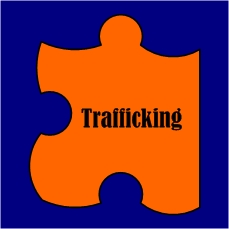Analysis on China Trafficking for Adoption

“China National Radio reported in June that around 200,000 children disappear every year. Only 0.1 per cent of them are found and returned to their families. An art exhibition was organised on 1 June 2013 by Li Yueling, volunteers working for the cause displaying photos of 61 missing children along with documentaries of their parents. Though official data is patchy but a substantial number of these children are trafficked within China.
What is fuelling child abduction in China? What is the extent of these abductions? What steps are being undertaken by the Chinese government to prevent the abduction? Who are involved in these abductions?
Children across China are being abducted by human traffickers and sold for adoption, labour or household servants or prostitution. A major reason due to which the problem germinated and has become so entwined with the Chinese society is the One-Child Policy. The One-Child Policy has led to a burgeoning black market in stolen children, at least 70,000 a year. Due to the cultural bias for a male child couples having the first chid [sic] as a daughter and rural households having two daughters desire a male child. This bias plus lax adoptive laws have also led to this social evil thriving in China.
The main targets are baby boys though girls are also abducted for the purpose of selling them as labourers and prostitution. Although some are sold to buyers in Singapore, Malaysia and Vietnam, most of the boys are purchased domestically by families desperate for a male heir. The chain of kidnapping, transferring and selling has become so strong that in some provinces such as Guangdong children are kidnapped, transferred out of town within half an hour and finally sold in another town. Su Qingcai, a tea farmer in Fujian Province, admitted buying a 5-year-old boy for the equivalent of $3,500, even though Mr. Su already had a teenage daughter. “A girl is just not as good as a son,” Mr. Su said in an interview to the New York Times, “It doesn’t matter how much money you have. If you don’t have a son, you are not as good as other people who have one.” There are large criminal gangs which have nationwide networks. These gangs are also involved in cross border trafficking with other countries for example Vietnam and Myanmar. In May 2013 one such racket was busted and ten Vietnamese children were returned to Vietnam.
There have been numerous reports that in many cases where children are born in violation of the One-Child Policy they are forcefully taken by officials and registered in orphanages to be further sold abroad for adoption. In a report by Caixin Century magazine, sixteen babies were seized in Hunan who were born in violation of the One-Child Policy. The office would get thousand renminbi for each child whereas the orphanage would receive US$ 3,000 to 5000 as adoption fees. Parents interviewed in this report claimed that after 2000 if the violators of One-Child Policy are unable to pay the fine their children are abducted by the officials.
The new department set up to look into child abductions in 2007 says that they have solved 54000 cases of trafficked children from 2007 to 2012. The government has taken some measures to control the growing menace. An action plan for fighting human trafficking 2013-2020 has been formulated with relevant international conventions and Chinese laws. The ministry also keep a missing children database with their DNA profiling. Special offices to investigate child abduction cases have been set up and increased coordination across twenty different provinces has led to a decrease in child abduction cases according to officials. The officials, activists and parents have taken the help of social media to share information about the abducted children and also draw public attention to the problem. They post photographs of kidnapped children on website and in some cases parents have been able to locate their children. People also post pictures of children whom they suspect might have been kidnapped and sold in their neighbourhood.
Despite efforts from officials, activists and citizens the problem is increasing though the numbers of kidnapped children have come down due to some recent crackdowns. The reasons are official corruption on the one hand and the raison d’être which has initiated the whole process in the first place. There have been reports of officials being involved with the trafficking gangs as the business is lucrative. The act of buying an abducted child is a criminal act; however no criminal liability has been affixed to it. People get away with punishment in form of monetary fines. Even the orphanages sometimes fail to take the DNA of the children they receive and eventually give them away for adoption which lessens the chances of verifying whether the children were abducted or not.
Though stricter laws and crackdowns might lead to a lowering of child trafficking but the One-Child Policy would continue to create a demand for it and create social fissures in Chinese society.”
China: Child Abduction And Trafficking – Analysis
[Eurasia Review 7/1/13 by Namrata Hasija]
REFORM Puzzle Piece


Recent Comments